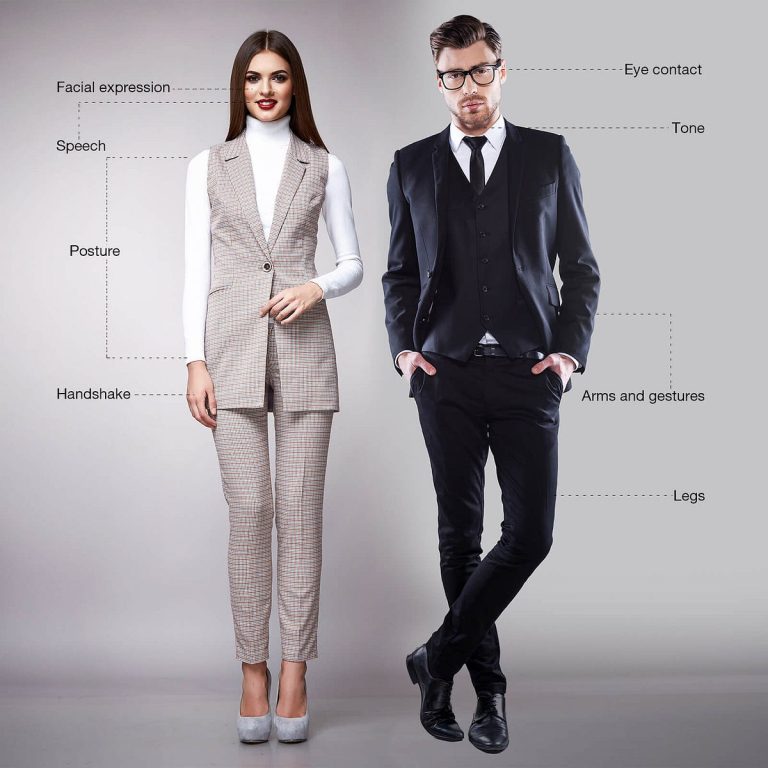Hands In Back Pockets Body Language
Are you curious about body language? Let’s dive into the fascinating topic of hands in back pockets body language. We use our hands to communicate in many ways, and the placement of our hands can reveal a lot about our thoughts and emotions.
Have you ever noticed someone standing with their hands casually tucked into their back pockets? This seemingly casual gesture actually conveys a message. It exudes confidence and a relaxed attitude, suggesting that the person is comfortable and at ease in their surroundings.
But what does it really mean when someone adopts this body language? Join me as we explore the hidden meaning behind hands in back pockets and uncover the secrets they reveal about a person’s mindset and intentions.

Understanding the Power of Hands in Back Pockets Body Language
Body language plays a crucial role in communication, often conveying messages beyond words. One intriguing aspect of body language is the position of the hands, and specifically, the gesture of placing hands in the back pockets. This nonverbal cue can reveal a wealth of information about a person’s confidence, attitude, and overall demeanor. In this article, we will explore the various meanings behind the hands in back pockets body language, its cultural and gender implications, and how to interpret this gesture in different contexts.
The Confidence and Nonchalance of Hands in Back Pockets
1. A Symbol of Relaxed Confidence
When someone confidently places their hands in their back pockets, it often indicates a sense of ease and self-assuredness. This gesture is commonly associated with a person who is comfortable in their own skin and exudes confidence. By displaying this body language, individuals may signal that they are in control of the situation and self-assured in their abilities. It can also communicate a relaxed demeanor and an open attitude towards interaction.
However, it is important to note that the interpretation of this gesture may vary depending on the context and the cultural norms. In some cultures, such as Japan, placing hands in back pockets may be considered rude or disrespectful. Therefore, understanding the cultural context is essential when interpreting body language cues like this.
2. A Display of Nonchalance
Hands in back pockets can also be a nonchalant gesture that symbolizes a laid-back attitude. It may signify a casual approach to the situation at hand, indicating a lack of concern or urgency. Individuals adopting this body language might be projecting an air of nonchalance or indifference, possibly in an attempt to appear more relaxed or unaffected by the circumstances.
However, it’s crucial to consider other factors when interpreting this gesture. For example, the overall posture, facial expressions, and other accompanying body language cues can provide a more holistic understanding of the person’s mindset and emotions. Body language should be read in conjunction with verbal communication and other nonverbal cues for accurate interpretation.
The Cultural and Gender Implications of Hands in Back Pockets
3. Cultural Variations in Interpretation
Body language cues can vary greatly across different cultures, and the interpretation of hands in back pockets is no exception. While some cultures may view this gesture as a sign of confidence or relaxation, others may interpret it differently. For instance, in certain Asian cultures, placing hands in back pockets may be seen as disrespectful or offensive. It is essential to consider the cultural context and norms when analyzing body language cues and avoid making assumptions solely based on individual interpretations.
4. Gender Differences in Gesture Perception
Another factor to consider when interpreting hands in back pockets body language is gender. Society often associates specific gestures with gender roles and expectations. In some contexts, men adopting this position may be perceived as more confident or self-assured, while women might be seen as more laid-back or casual. However, it is crucial to avoid generalizations and stereotypes when interpreting body language and recognize that gestures can vary among individuals regardless of gender.
Interpreting Hands in Back Pockets Body Language in Different Contexts
5. Professional Environments
In a professional setting, the interpretation of hands in back pockets body language can depend on the organization’s culture and the specific situation. Generally, this gesture may be seen as too casual or relaxed for a formal workplace, potentially giving the impression of a lack of professionalism. However, in more creative or informal work environments, this gesture could be deemed acceptable or even indicative of a confident and laid-back approach.
6. Social Interactions
During social interactions, the meaning behind hands in back pockets body language can differ depending on the context and relationship dynamics. For example, in a casual gathering among friends, this gesture may be interpreted as a sign of ease and friendliness. However, in a formal setting with unfamiliar individuals, it might be perceived as overly casual or even disrespectful. It is essential to consider the social context, cultural norms, and the existing relationship dynamics when interpreting body language.
7. Romantic Context
Hands in back pockets body language can also carry meaning in romantic contexts. For some individuals, this gesture may be a subtle way of signaling attraction or interest. Placing hands in back pockets can draw attention to the hips and create a more confident and attractive posture. However, it is essential to consider a person’s body language as a whole and not rely solely on a single gesture to determine attraction.
Additional Considerations
8. The Importance of Context
Interpreting body language, including the position of hands in back pockets, requires a comprehensive understanding of the context and the individual’s overall demeanor. Body language cues should always be read in conjunction with other nonverbal signals and verbal communication to form a more accurate understanding.
9. Individual Differences
It is crucial to recognize that body language cues can vary among individuals. While some people may naturally adopt the hands in back pockets gesture, others may have different preferences or habits. Additionally, personal characteristics, cultural background, and comfort levels may influence how individuals display their body language. Avoid making generalizations or assumptions based solely on this specific gesture.
10. Nonverbal Consistency
Interpreting body language accurately relies on observing patterns and consistency in nonverbal cues. It is essential to consider how the position of hands in back pockets aligns with other body language signals, such as facial expressions, posture, and gestures. Nonverbal consistency provides a more reliable indication of a person’s emotions, attitudes, and intentions.
Conclusion
The position of hands in back pockets is a fascinating aspect of body language, revealing insights into a person’s confidence, attitude, and overall demeanor. However, interpreting this gesture requires careful consideration of the cultural, gender, and situational context. By recognizing the nuanced meanings behind body language cues and understanding the individuality of each person’s nonverbal communication, we can gain a deeper understanding of human behavior and enhance our social interactions.
Key Takeaways: Hands in Back Pockets Body Language
- Hands in back pockets can signify confidence and a laid-back attitude.
- It may indicate a lack of interest or boredom in a situation.
- Using this body language can also show a sense of superiority or dominance.
- Be aware that context matters when interpreting this gesture.
- Remember, body language is just one aspect of communication and should be considered along with other cues.
Frequently Asked Questions
Here are some frequently asked questions related to the body language of having hands in back pockets:
1. What does it mean when someone has their hands in their back pockets?
When someone has their hands in their back pockets, it often signifies a casual and relaxed attitude. It can indicate self-assurance, confidence, and a lack of formality. This body language gesture may suggest that the person feels comfortable in their surroundings and is at ease in social interactions. However, it’s important to note that body language cues should always be interpreted in context, as they can vary based on cultural or personal factors.
It’s important to be mindful of other accompanying behaviors and non-verbal cues to accurately gauge someone’s emotions and intentions. For example, if someone with their hands in their back pockets is also leaning back or slouching, it may indicate a more defensive or closed-off posture, potentially implying disinterest or detachment.
2. Are there any negative interpretations of hands in back pockets body language?
While hands in back pockets can often convey a relaxed attitude, certain negative interpretations can arise. If someone frequently uses this gesture in professional or formal settings, it may be seen as disrespectful or unprofessional. In such contexts, it is generally expected to maintain a more upright and attentive posture.
Moreover, hands in back pockets can sometimes reflect a defensive or guarded stance. If someone is folding their arms, crossing their legs, or exhibiting other signs of defensiveness while also having their hands in their back pockets, they may be signaling a lack of openness or a desire to create distance. However, it’s vital to consider the complete context and combine other non-verbal cues before jumping to conclusions.
3. How does gender play a role in the interpretation of hands in back pockets body language?
Interpreting body language gestures should be done with caution, as their meaning can vary based on individual differences and cultural norms. However, gender can sometimes play a role in the interpretation of hands in back pockets body language.
For example, in some cultures or settings, women may be more likely to use this gesture as a display of confidence or power. In contrast, men may utilize it as a sign of relaxation or disinterest. It’s essential to avoid making sweeping generalizations and instead focus on the specific situation and the individual’s overall body language.
4. Can the meaning of hands in back pockets body language change in different contexts?
Yes, the meaning of hands in back pockets body language can indeed change depending on the context. While it often represents a relaxed and casual demeanor, it can have different implications based on the environment or social situation.
For example, in a formal or professional setting, having hands in back pockets may be seen as disrespectful or too casual. In contrast, in a social gathering or casual setting, it is more likely to be interpreted as a relaxed and comfortable gesture. Additionally, the interpretation can be influenced by cultural norms and individual personality traits. Therefore, it is crucial to consider the specific context when analyzing body language cues.
5. Should I pay attention to other non-verbal cues when interpreting hands in back pockets body language?
Absolutely! To accurately interpret body language, it is essential to consider other non-verbal cues that complement the gesture of having hands in back pockets.
Facial expressions, posture, eye contact, and gestures all play a significant role in understanding someone’s intentions and emotions. For instance, if someone’s facial expression is relaxed and their eyes are engaged, it can indicate genuine interest and openness, even if their hands are in their back pockets. Additionally, combining different non-verbal cues can help avoid misinterpretations and provide a more accurate understanding of the person’s body language.
Why you put your Hands in your Pockets
Summary
When someone puts their hands in their back pockets, they may be feeling confident and relaxed. This body language gesture can also indicate defiance or a desire to appear cool. However, it is necessary to consider the context and other signs of body language to understand its true meaning.
By observing someone’s hand placement, we can gain insights into their emotions and intentions. While hands in back pockets can suggest confidence or rebellion, we should look for additional clues to fully understand their message. Pay attention to the overall context and other body language signals for a more accurate interpretation.

